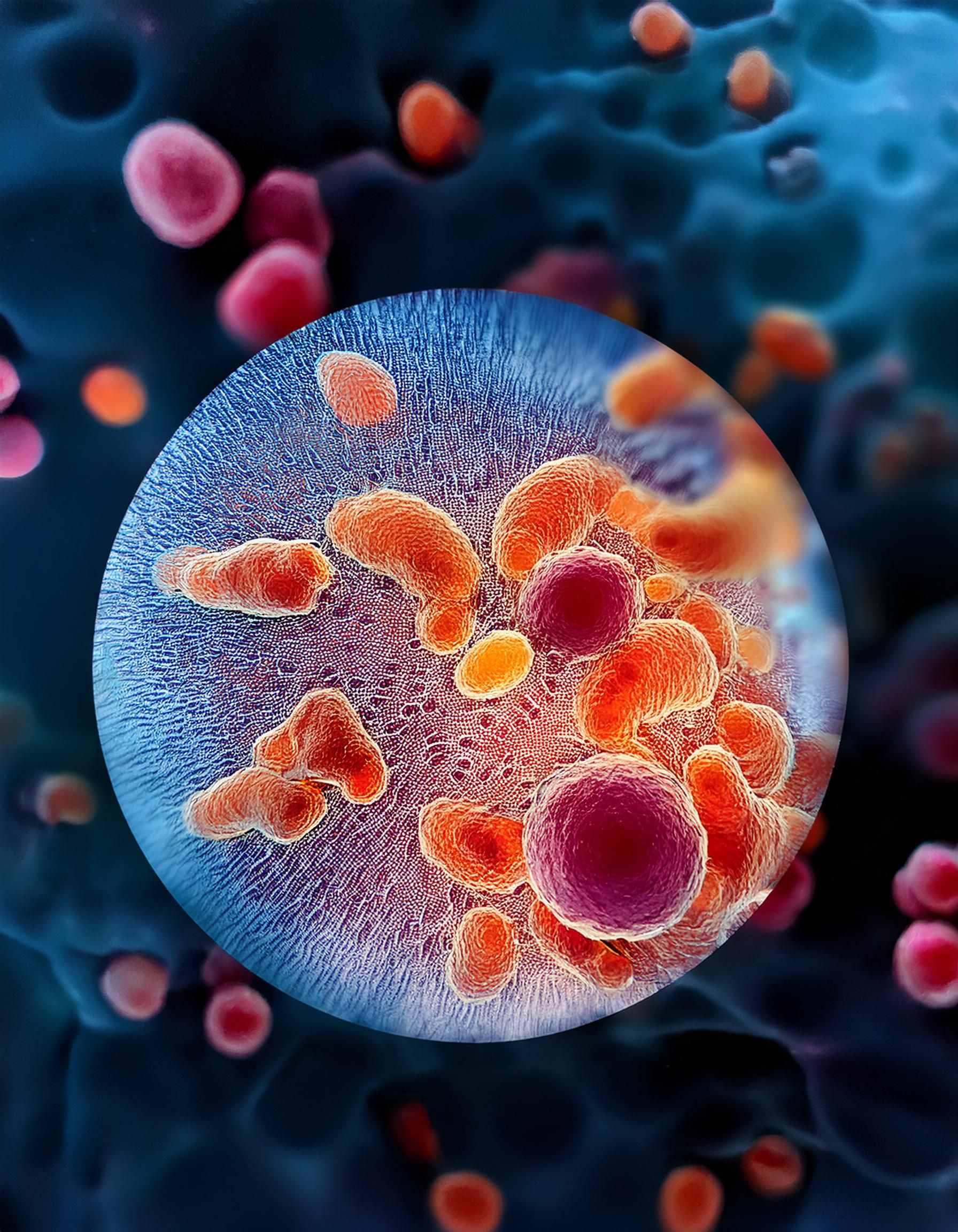Zolbetuximab Scores FDA Approval in CLDN 18.2+ Gastric/GEJ Cancer
This approval marks the first CLDN 18.2-targeted therapy in this patient population.
Microscopic, photorealistic image of tumor cells - Generated with Adobe Firefly

- The FDA has approved zolbetuximab (Vyloy) as a first-line treatment for locally advanced unresectable or metastatic HER2-negative gastric or gastroesophageal junction (GEJ) adenocarcinoma that is claudin (CLDN) 18.2-positive.
- Zolbetuximab is a first-in-class investigational CLDN18.2-targeted monoclonal antibody and is the first targeted therapy for this patient population.
- On May 9, 2024, the BLA for zolbetuximab was resubmitted after a complete response letter (CRL) was issued on January 4, 2024, by the FDA.
The FDA has approved zolbetuximab for the first-line treatment of patients with locally advanced unresectable or metastatic, HER2-negative, CLDN 18.2-positive gastric/GEJ cancer, making it the first CLDN 18.2-targeted therapy in this patient population.1
The approval follows a CRL issued in January 2024 after third-party manufacturing deficiencies were identified during the prelicense inspection of the facility. However, the FDA did not raise any concerns related to the clinical data of zolbetuximab and did not request any additional studies to support the BLA.
The approval is supported by data from the phase 3 SPOTLIGHT (NCT03504397) and GLOW (NCT03653507) studies.
In SPOTLIGHT, zolbetuximab was combined with 5-fluorouracil, leucovorin, and oxaliplatin (mFOLFOX6) and led to a median progression-free survival (PFS) by independent review committee of 10.61 months (95% CI, 8.90-12.48) vs 8.67 months (95% CI, 8.21-10.28) with placebo/mFOLFOX6, leading to a 25% reduction in the risk of disease progression or death (HR, 0.751; 95% CI, 0.589-0.942; P =.0066).2
The international, double-blind, placebo-controlled SPOTLIGHT trial enrolled patients with previously untreated locally advanced unresectable or metastatic gastric/GEJ adenocarcinoma and CLDN18.2 positivity. To be eligible for enrollment, patients must have had moderate-to-strong CLDN18 staining in at least 75% of tumor cells, HER2-negative disease, and an ECOG performance status of 0 or 1. Patients were randomly assigned 1:1 to receive the combination of zolbetuximab and mFOLFOX6 (n = 283) or placebo and mFOLFOX6 (n = 282).
In GLOW, zolbetuximab was combined with capecitabine and oxaliplatin (CAPOX) and showed, at a median follow-up of 12.62 months in the experimental arm vs 12.09 months in the comparator arm, a median PFS of 8.21 months (95% CI, 7.46-8.84) compared with 6.80 months (95% CI, 6.14-8.08), respectively (HR, 0.687; 95% CI, 0.544-0.866; P =.0007). The 12-month PFS rate with zolbetuximab/CAPOX was 35% vs 19% with placebo/CAPOX, and the 24-month PFS rate was 14% vs 7%, respectively.3
GLOW was a global, multicenter, double-blind, randomized study. In the experimental arm, zolbetuximab was administered at a loading dose at cycle 1, day 1 followed by a lower dose during subsequent cycles every 3 weeks. Patients in the experimental arm also received CAPOX until confirmed disease progression or completion of 8 treatments. For the CAPOX regimen, oxaliplatin was administered on day 1 of each cycle, and capecitabine was administered on days 1 through 14. Chemotherapy was continued at the investigator’s discretion or until the patient met the discontinuation criteria. Patients in the comparator arm were administered matching placebo and CAPOX.